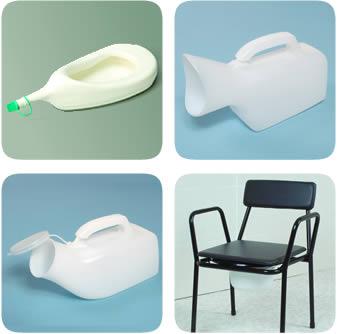
Photos are provided with permission from NRS Healthcare: https://www.nrshealthcare.co.uk
- Identify the problem The positive news is that there are specialists and treatments to help. Get advice from a doctor, nurse or in some cases the person may be referred to a specialist urologist or continence nurse advisor. They will help to identify the cause of the problem and make an individual treatment plan for the person.
- Assessment If you or the person after a stroke notices a continence problem, you can request an assessment by a doctor or nurse (if the person is still in hospital) or by your GP or nurse (if the person is at home) This could involve simple and painless tests such as a urine sample test or a bladder scan.
- Equipment If the person needs any equipment such as a commode, urine bottle or rails in the bathroom ask for a referral for community nurse or community occupational therapist. Supplies of pads and special underwear or mattress covers are available. Ask your GP or practice nurse to order these for you.
- Medication Sometimes medication can help to reduce the symptoms of urgency and frequency. This is usually taken once a day and it may take a few weeks before the person will notice an improvement.
- Exercise Physiotherapists can show the person exercises to strengthen muscles. This will help to strengthen and retrain the bladder.